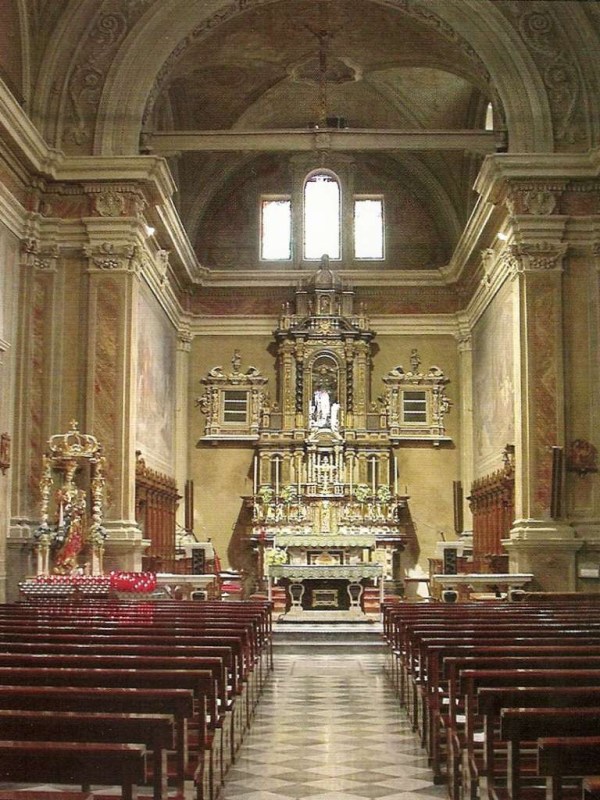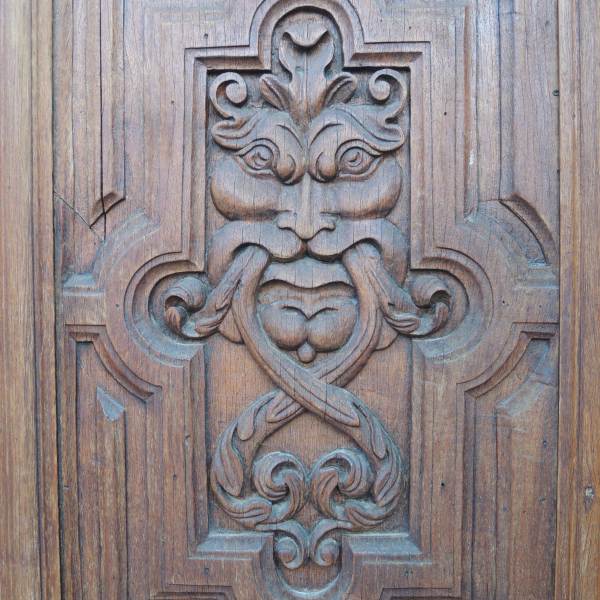The parish church of Saints Rocco, Fabiano and Sebastiano was constructed on the ruins of a pre-existing church, built towards the end of the 15th century and consecrated in 1490.
In 1661, the entire population was involved in helping to build the church we see today, as the parish priest, Giovanni Antonio Miotti, wrote in his Memoirs:
On 10 August, the day of San Lorenzo, they began to work all together and split stones with such enthusiasm that it was a great honour to God and also an enlightenment for strangers, as men, women, the elderly and even children all contributed to the work; and they continued in this way during all the following feast days, carrying stones or sweeping around the church or preparing wood and everyone competed to see who could find a new invention to build the work.
Consecrated a few years later in 1666, the parish church was enlarged in the 1960s, when the façade was restored.
The latter has one typanum and is on two levels, each of which is divided into four pilasters.
Today's granite portal replaced the one which the "Roman Benefactors"", in other words by the emigrants from Caspoggio to Rome, had made in 1696.
The old, carved wood shutters have remained (17th/18th century).

Inside there is a long nave, much of which is very low, due to a balcony which was constructed after it had been enlarged.
There are two chapels on each side.
The second on the left has a richly decorated ancon with a statue of the Immaculate Conceptionin its centre.
Higher up, theAngel and theAnnunciation are portrayed on each side of the window.
In the centre niche of the ancon is a gold and polychrome wood statue of the
Madonna with Child.
The side walls of the presbytery have two large frescoes with scenes of the
Martyrdom of Saint Sebastian and
Saint Rocco taking care of victims of the plague by Giovanni Gavazzeni (end 19th century).
The high altar of inlaid marble has a carved, Baroque style, gold painted ancon in the shape of a portal.
The central niche holds a small statue of
Saint Rocco (17th/18th century).
On each side of the ancon are two small cupboards to hold relics with wooden cornices decorated with friezes, spirals and little angels (18th century).
The carved wood pulpit stands above the right-hand entrance (17th century).
The second chapel on the right inside a remarkable stucco ancon is a gable and a statue of
Sant’Antonioand a canvas with
Sant’Antonio kneeling before the Child Jesus surrounded by angels (17th century).
On the wall of the first chapel on the right is a canvas with the
Virgin of the Rosary with Child, four saints and 15 curved compartments with the
Mysteries of the Rosary (17th century).
 Parish church. Detail of the main door.
Parish church. Detail of the main door.